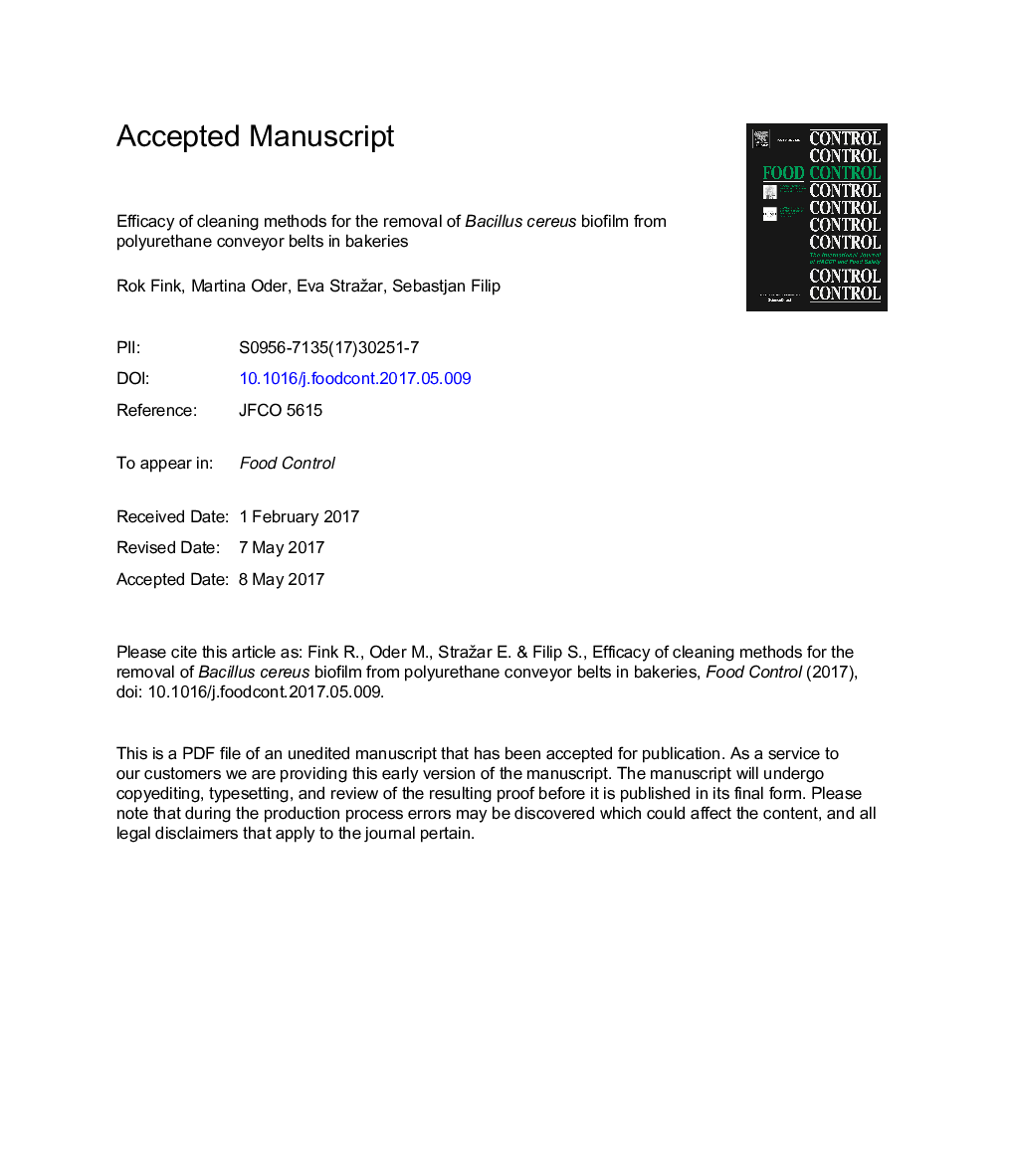| Article ID | Journal | Published Year | Pages | File Type |
|---|---|---|---|---|
| 5767251 | Food Control | 2017 | 23 Pages |
Abstract
Bakery food contact surfaces generally include conveyor belts where the foodstuff is in contact with surfaces for long periods. The aim of the study was to analyse biofilm levels of B. cereus by initially inoculated vegetative cells and spores on different polyurethane conveyor belts. The overall biomass of the biofilm was measured using the optical density of absorbed crystal violet dye in cells. Moreover, the efficacy of cleaning agents, ultrasound, and a combined method was tested. The results show biofilm inoculated from spores attaches to surfaces the most firmly, followed by wild and standard strains. We did not prove that material roughness or contact angle impact the overall biomass of the biofilm. Furthermore, an efficacy assessment shows that strongly attached biofilm from spores is more difficult to eliminate in comparison to biofilm from vegetative cells. Moreover, we determined that using either the cleaning agent or ultrasound had limited capacity for biofilm removal in comparison with the combined method. Therefore, prevention of food contamination should also include hygiene management of food contact materials. The bakery industry should plan to change cleaning procedures to those implementing hurdle technologies.
Keywords
Related Topics
Life Sciences
Agricultural and Biological Sciences
Food Science
Authors
Rok Fink, Martina Oder, Eva Stražar, Sebastjan Filip,
